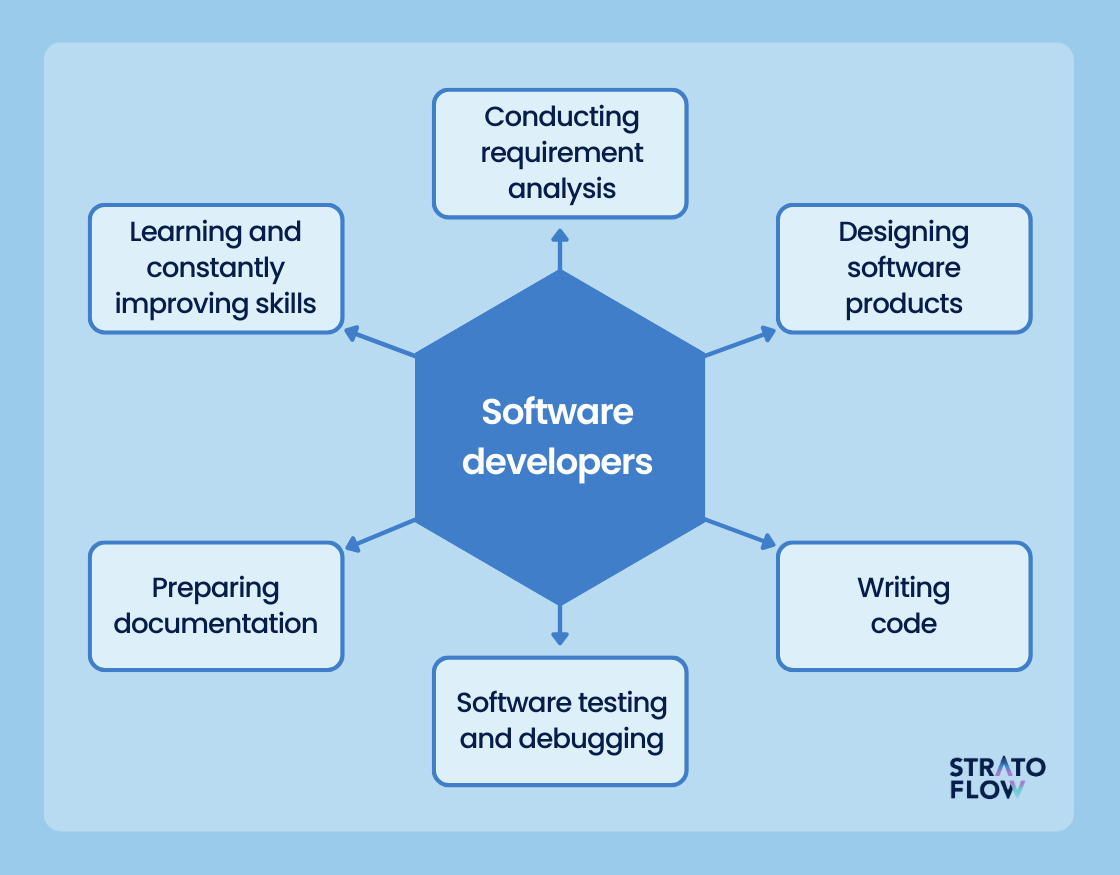Why Picking the Right Software Development Partner Can Change Your Project
Wiki Article
Devoted Developers vs. In-House Teams: Which Is Right for You?
The decision between making use of committed designers and maintaining an internal team is a substantial one that can affect the trajectory of your tasks and overall organization technique. Devoted programmers offer a degree of adaptability and customized experience that can be advantageous for particular, short-term efforts. Alternatively, internal teams add to a cohesive company culture and a nuanced understanding of long-lasting goals. By checking out crucial elements such as budget plan, job range, and preferred control, you can much better figure out which technique straightens with your business requirements. The effects of this option extend past prompt results-- take into consideration the more comprehensive effect on your service landscape.Comprehending Dedicated Programmers
The expanding demand for specialized skills in the technology market has caused the development of dedicated designers as a sensible option for numerous companies. These experts are normally gotten on a task basis, enabling business to leverage particular proficiency without the long-lasting commitment connected with full time hires. Dedicated designers are often ingrained within a client's team, supplying versatility and scalability to fulfill job needs.This model permits organizations to access a worldwide talent swimming pool, which is especially useful in a quickly advancing technical landscape. Devoted developers can be sourced from numerous geographical locations, making sure that companies can find the right capability at affordable prices. They often bring a wide range of experience and knowledge, having serviced varied jobs across various sectors.
Additionally, devoted designers can concentrate specifically on the tasks handy, boosting productivity and performance. They are geared up to integrate effortlessly into existing workflows, collaborating carefully with internal teams to attain project objectives. This approach not only decreases the burden of employment and training however likewise allows companies to remain nimble, adjusting promptly to transforming market demands and technological improvements.
Advantages of In-House Teams

Furthermore, internal teams have a tendency to have a much deeper understanding of the business's objective, values, and goals. This positioning can enhance employee engagement and inspiration, as team members really feel a lot more attached to their work and the organization's success. Additionally, having a devoted internal team allows for far better alignment of objectives and strategies, as these members are consistently concentrated on the business's top priorities.
Internal teams also help with quicker decision-making processes, as they can respond extra quickly to challenges and adjustments. The well-known partnerships and knowledge with business protocols permit streamlined operations and lowered miscommunication. Ultimately, the mix of a cohesive society, alignment with business goals, and effective communication makes in-house groups a useful property for numerous companies, particularly those seeking to grow long-term development and innovation.
Expense Factors To Consider
When examining price considerations, both in-house teams and devoted programmers present unique economic effects for organizations. Involving committed developers normally involves a pay-per-project or hourly best graphic design websites 2018 rate model, which can be economical for organizations with fluctuating project demands. This method permits versatility in scaling sources up or down, ensuring that companies only spend for the services they require.On the other hand, internal teams involve dealt with prices, consisting of wages, advantages, and overhead expenditures such as workplace space and devices. While this design uses better control and instant availability of resources, it may result in greater long-lasting expenses, particularly if the work does not validate a permanent staff.
Moreover, firms need to think about the covert costs connected with employment and training of in-house staff members, which can additionally strain budgets. In many cases, the time and sources invested in taking care of an in-house group can take away from the company's core company purposes.

Task Management and Flexibility
Task management and versatility are essential variables that influence the option in between internal groups and committed developers. Dedicated teams typically have actually developed procedures for taking care of tasks successfully, leveraging specific methodologies like Agile or Scrum, which help with iterative development and versatility.
Ultimately, the choice in between dedicated developers and internal groups hinges on the preferred level of flexibility and the specific project monitoring needs. Business should assess their functional dynamics, task complexity, and resource schedule to figure out which option straightens ideal with their strategic objectives.
Making the Right Choice
Choosing the appropriate advancement strategy-- in-house groups or specialized designers-- needs a mindful assessment of various factors that line up with a company's tactical goals. On the other hand, internal groups can give far better connection and assimilation with existing employees.Following, review your spending plan. Committed programmers often present an affordable option for short-term projects, while internal groups might incur higher long-term expenditures as a result of wages, advantages, and overhead costs. Analyze the degree of control and cooperation preferred; in-house teams typically foster more powerful interaction and alignment with company society.
If instant outcomes are needed, specialized developers can be onboarded rapidly, whereas developing an in-house group takes time for recruitment and training. If continual growth is important, investing in an in-house group might yield much better returns over time.
Verdict
Finally, the decision between internal teams and dedicated developers depends upon task demands and organizational objectives. Committed developers provide adaptability and specific expertise, making them suitable for temporary initiatives. Conversely, internal teams grow a cohesive society and deeper alignment with lasting goals. Mindful examination of budget restraints, job timelines, and desired control degrees is vital for determining one of the most appropriate strategy, guaranteeing placement with calculated priorities and operational efficiency.The decision between making use of devoted developers and preserving an internal group is a substantial one that can affect the trajectory of your jobs and total organization technique.Project administration and adaptability are vital variables that affect the choice between devoted designers and internal teams. offshore software development.In comparison, internal groups might stand out in preserving a constant task monitoring structure due to their experience with the company's culture and long-term objectives. Committed programmers commonly offer a cost-efficient remedy for temporary tasks, while internal look at this web-site teams may incur greater long-lasting costs due to salaries, advantages, and expenses expenses.In conclusion, the choice in between specialized developers and in-house groups pivots on job requirements and organizational objectives
Report this wiki page